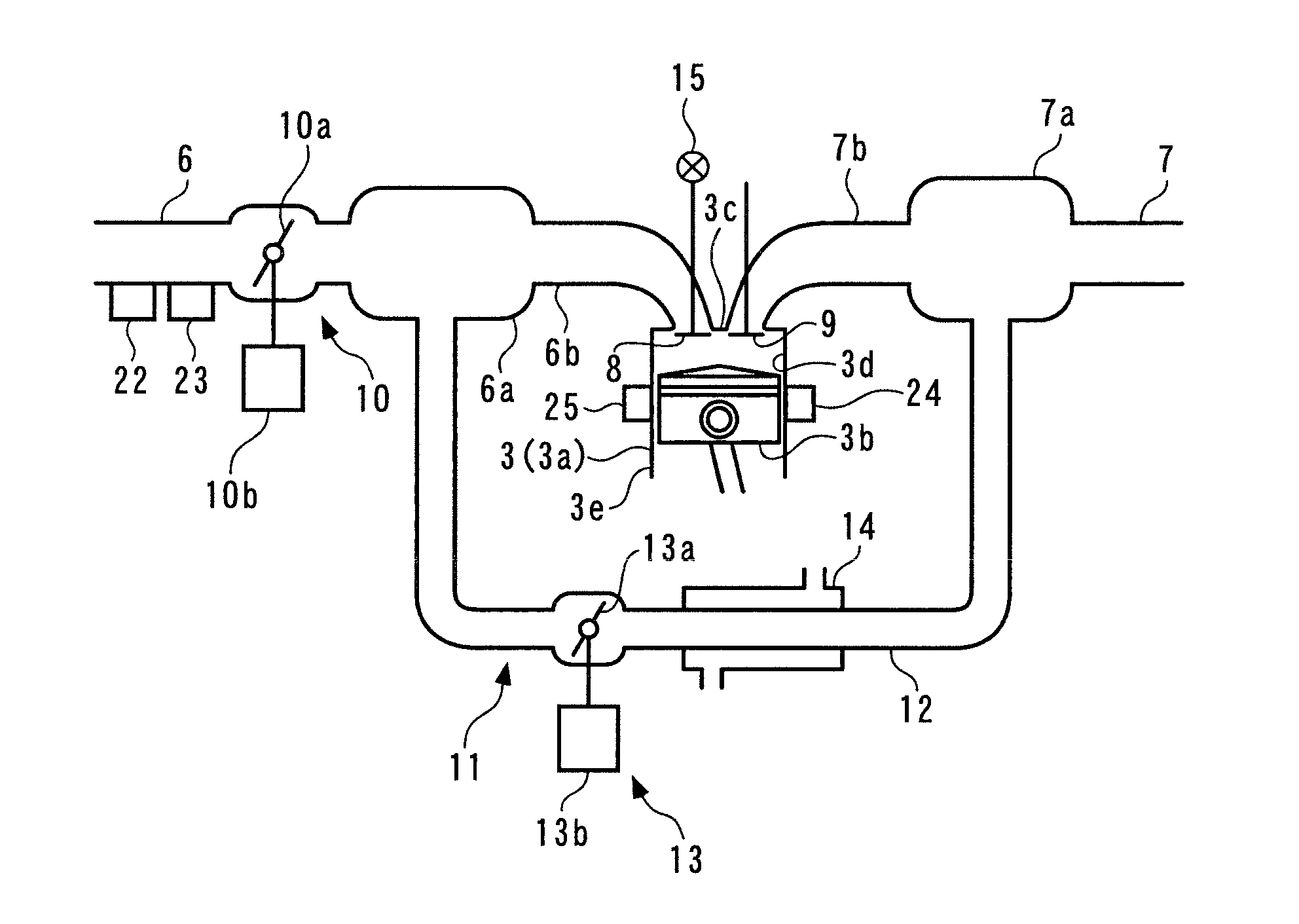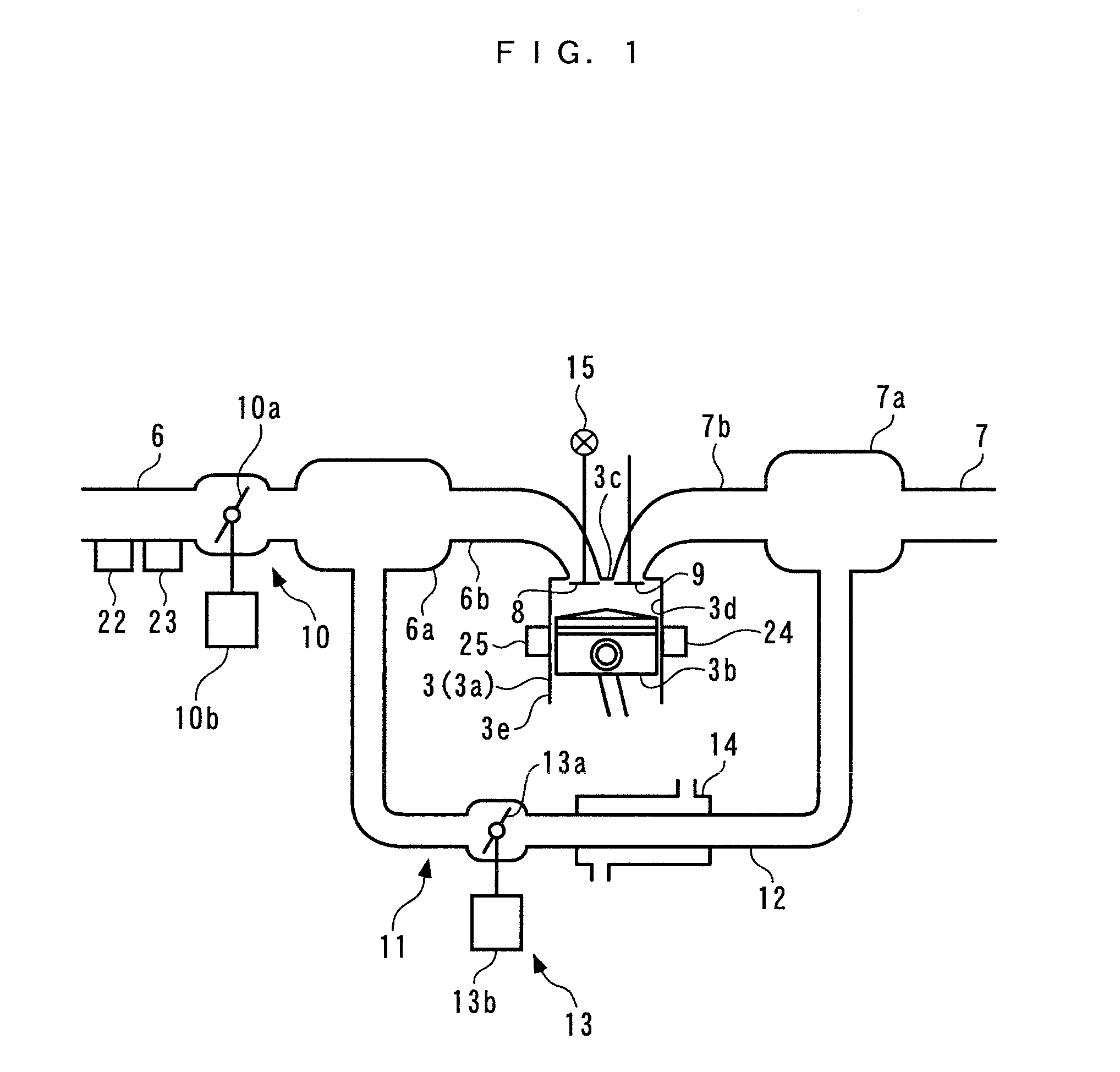Control system for internal combustion engine
a control system and internal combustion engine technology, applied in the direction of electrical control, process and machine control, instruments, etc., can solve the problems of increasing the number of setting steps and increasing and achieve the effect of enhancing the fuel economy of the engine and reducing the cost of the control system
- Summary
- Abstract
- Description
- Claims
- Application Information
AI Technical Summary
Benefits of technology
Problems solved by technology
Method used
Image
Examples
first embodiment
[0109]A setting process shown in FIG. 18, sets the target intake air amount GAIRCMD without determining the above-described characteristic pattern of the estimated torque characteristic curve.
[0110]In the present process, first, the index number i of the provisional intake air amount GAIRPRV is set to 1 (step 61), and it is determined whether or not the estimated torque TRQESTi associated with the index number i, i.e. in this case, an estimated torque TRQEST1 is not smaller than the target torque TRQCMD (step 62). If the answer to this question is negative (NO), the index number i is incremented (step 63), and the determination in the above-described step 62 is executed again. As described above, the determination of the estimated torque TRQESTi in the step 62 is executed in an increasing order of the index numbers i, that is, in an increasing order of the provisional intake air amounts GAIRPRVi.
[0111]On the other hand, if the answer to the question of the step 62 is affirmative (Y...
second embodiment
[0116]Next, a process for setting the target intake air amount GAIRCMD will be described with reference to FIGS. 19 to 21. This setting process sets the target intake air amount GAIRCMD while determining a characteristic pattern of the estimated torque characteristic curve.
[0117]FIG. 19 shows a main routine of the setting process. In the present process, a process for determining to which of the above described first to fourth patterns corresponds the characteristic pattern of the estimated torque characteristic curve is executed (step 71), and then based on the determined characteristic pattern, a process for calculating the target intake air amount GAIRCMD is executed (step 72).
[0118]FIG. 20 shows the process, as a subroutine, for determining a characteristic pattern, which is executed in the above-described step 71. In the present process, first, the index number i is set to 1 (step 81), and it is determined whether or not a next-order estimated torque TRQESTi+1 is larger than t...
PUM
 Login to View More
Login to View More Abstract
Description
Claims
Application Information
 Login to View More
Login to View More - R&D
- Intellectual Property
- Life Sciences
- Materials
- Tech Scout
- Unparalleled Data Quality
- Higher Quality Content
- 60% Fewer Hallucinations
Browse by: Latest US Patents, China's latest patents, Technical Efficacy Thesaurus, Application Domain, Technology Topic, Popular Technical Reports.
© 2025 PatSnap. All rights reserved.Legal|Privacy policy|Modern Slavery Act Transparency Statement|Sitemap|About US| Contact US: help@patsnap.com



